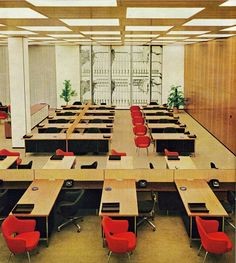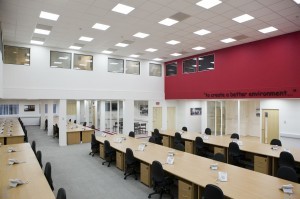“The Territorial Imperative”, or more correctly, “The Territorial Imperative: A Personal Inquiry Into the Animal Origins of Property and Nations”, was written in 1966 by Robert Ardrey. It along with the “The Naked Ape”, or again more correctly “The Naked Ape: A Zoologist’s Study of the Human Animal” which was written in 1967 by Desmond Morris, are probably the first two books I read that were not written by Theodor Geisel, more commonly known as Doctor Seuss.
I didn’t choose to read them at that time. They were assigned to me one summer. I was getting ready to enter the fifth grade and attend a new school. I was told that they were preparatory work that needed to be completed before I could go to the new school.
I personally thought this concept sucked at the time, as summers were supposed to be school free, and here I was being required to read a couple of books.
What is interesting to me is that now, all these years later, these books and the topics that they covered are now coming back to me in the business world.
Initially both of these books were considered somewhat ground breaking in that they sought to explain the source of some human behaviors. Till then man (man as homo-sapiens the species, not man as a gender, for those of you who might have been getting ready to go full scale gender bias ballistic on me) was viewed as primarily a cognitive creature. What these books examined was the idea that man was also driven by certain instincts which also affected its behavior.
This was pretty radical and somewhat heady stuff for that time period. I’m pretty sure that as a would-be fifth grader I didn’t fully grasp a great deal of what the authors were trying to get across. I knew that it made me feel somewhat funny though. That is funny-strange, not funny-haha.
For those of you who have not read The Territorial Imperative, the following is a quick synopsis:
“It describes the evolutionarily determined instinct among humans toward territoriality and the implications of this territoriality in human meta-phenomena such as property ownership and nation building. … Ardrey posited that man originated in Africa instead of Asia, that he is driven by inherited instincts to acquire land and defend territory, and that the development of weapons was a fundamental turning point in his evolution. The Territorial Imperative further explores these ideas with a special emphasis on man’s distinct preoccupation with the concept of territory. It goes on to elucidate the role that inherited evolutionary instinct, particularly the so-called “territorial imperative”, plays in modern human society in phenomena such as property ownership and nation building.”
https://en.wikipedia.org/wiki/The_Territorial_Imperative
More simply put Ardrey posited that one of man’s driving instincts is to own and defend territory.
With that idea in mind, now look back at every business organizational structure and office / cubicle arrangement and apply this thesis to it. It ought to be somewhat enlightening. It also ought to explain why, when we are hired on, we are given “our space”, be it a desk, or cubicle, or whatever. It is now our physical, as well as metaphorical territory. We instinctively know that we must “work” in order to defend it.
As we matriculated up through management we acquired larger physical territories (bigger cubes and eventually offices) as well as larger spans of control over others and their cubes and offices. These territories were then defended against both internal and external competitors.
But it seems that times are changing. At least when it comes to office space. Business organizations have started to move away from the concept of the business territorial imperative. Office size and location are seeming to be done away with as companies move to the “Open Office” concept.
In the open office structure, no one has any more territory that anyone else. In fact, there are no specific assigned locations of any kind. Instead of having “your” desk, cube, office, territory, it is first-come first-served in the seating arrangements. Desk, or more accurately table-space is shared. There is no distinction between levels and spaces. It is positioned as egalitarian and a better office structure for all those involved.
It seems to me that the more things change the more they stay the same. I was looking at some old pictures of office spaces in the 1950’s. It was some pretty interesting stuff. Below is one that caught my eye, primarily because it was in color. Most of the rest of them seem to be in black and white. For comparison’s sake, I didn’t want to try and compare a black and white photo to a color one. Take a look.

This is the modern office, circa 1958. That’s more than sixty years ago. It’s neat. It’s orderly. It’s “open”. What is not to like about it?
Now let’s fast forward a little more than sixty years to today. Here is a look at what is called a “Mezzanine Floor” open office design.

Except for a little better photography and perspective use, I’m not seeing a whole lot of difference, read “progress” here.
The difference is that in the 1950’s you had “your space”. You were assigned a desk. As small as it was, it was your territory. That is where you went to work. Now, you don’t. In the “open office” you can come in and sit anywhere. If you are promoted and given more responsibility, or assigned a new role, you still come in and the same rules apply. You come in and sit wherever you choose.
I don’t know how good or bad, this new (or in this case “old”) open office concept is going to be. I haven’t had the opportunity to try it out yet. But it appears that I will have this opportunity soon. I am going to be interested to see how this return to the past is going to work and how it will affect a workforce that has not been in this environment before.
Many people I know have said that they have in the past or are now currently working in such environments. I also notice that a very high percentage of them now “work at home” in a home office. This high correlation between open office environments and working at home is probably just a coincidence.
Really.
It is probably also a coincidence that “your” home office is a fixed location within “your” home.
The Territorial Imperative was a ground-breaking book. It submitted that man, while being a reasoning creature was also driven by certain instincts, one of which was to define its own territory. It was shown that the defining and defending of these territories was one of the basic drives, and a significant driving force in human growth and evolution.
Maybe I am reaching, but I find it interesting that the same principles could be applied, to a greater or lesser extent in organizational and office dynamics. I also find it interesting that we seem to be in the midst of a period where organizations appear to be actively removing this behavior driver.
In the past, the “trappings of office” were recognized as one of the driving forces that was a cause for people to input that extra amount of effort. You wanted the bigger office. It was a symbol of your success.
I guess on the other side of the coin, your bigger office might have been a symbol of someone else’s lack of success. In today’s age of participation trophies and ninth place ribbons, the desire may not be so much to remove the symbol of success, but to remove the symbol of the lack of success of others. I guess if everyone sits at the same sort of desk, with the same amount of space, with no predefined location, no one can feel bad, or good about their territory, or their apparent lack of it.
On the other hand, in today’s hyper-competitive business environment, reducing the office space allocated to each employee, regardless of relative organizational position, might be a pretty good way of reducing what was once thought to be a relatively expensive fixed cost.
It is interesting that the reintroduction of an office environment that was evolved away from, more than half a century ago is being viewed as a “new and improved” (to borrow from most new products advertising mantras) step forward. It will also be interesting to see how it changes office behaviors.
Will there be an increase in the flight from the office to the home office? Will there be a reduction in the commitment to the assignment and the company on a greater level since there will no longer be a defined territory associated with the office? Despite these and other potential questions, as well as the recent research that shows such open office environments are not particularly conducive to organizational productivity, (“The impact of the ‘open’ workspace on human collaboration”, Ethan S. Bernstein and Stephen Turban, Published:02 July 2018 https://royalsocietypublishing.org/doi/10.1098/rstb.2017.0239 https://doi.org/10.1098/rstb.2017.0239) I think we are all going to get the chance to experience the open office for ourselves. We have seen that man is an adaptable species. He lives in igloos in the arctic and grass huts in the rain-forests, and just about everywhere in between. I guess he can try working in an open office as well.
